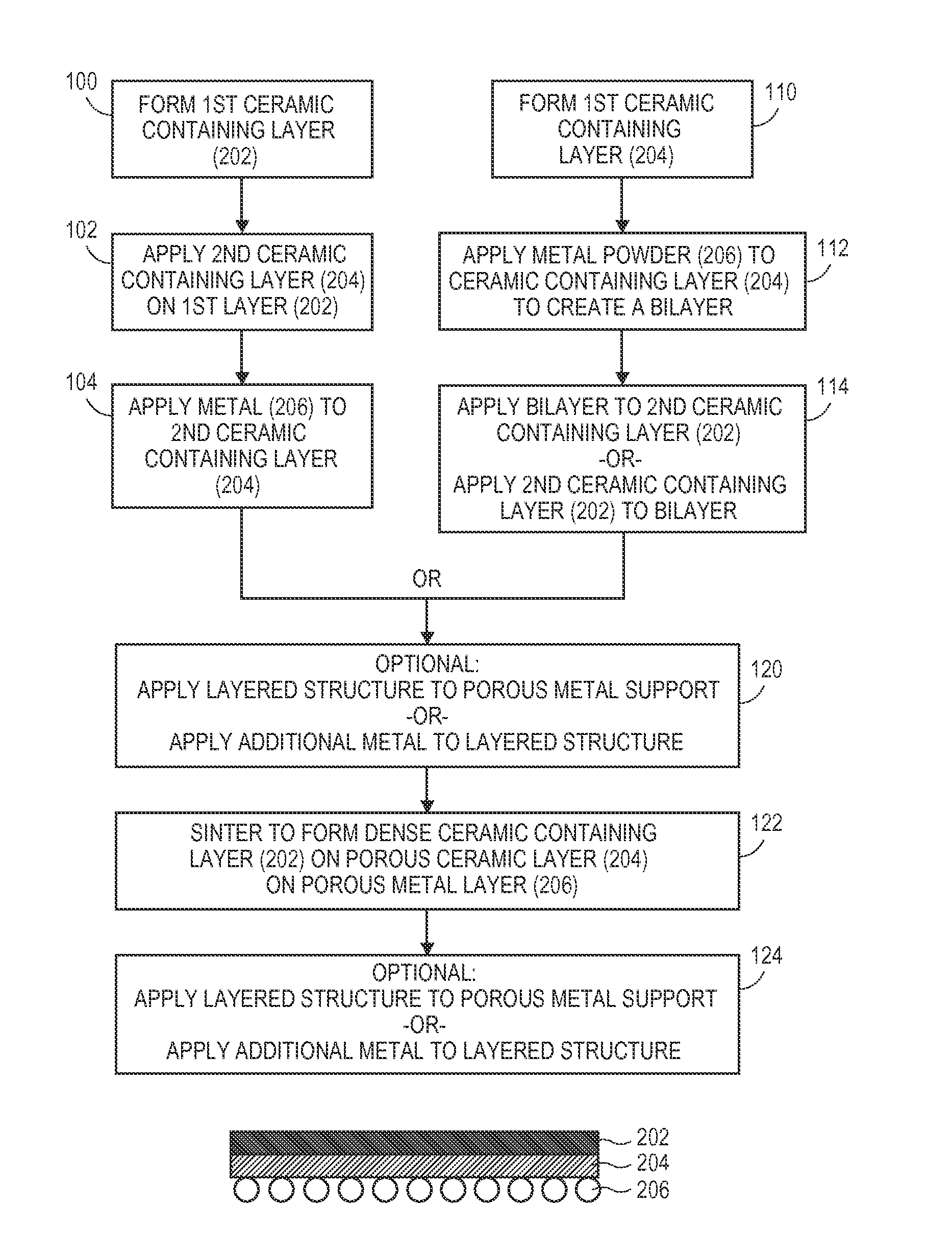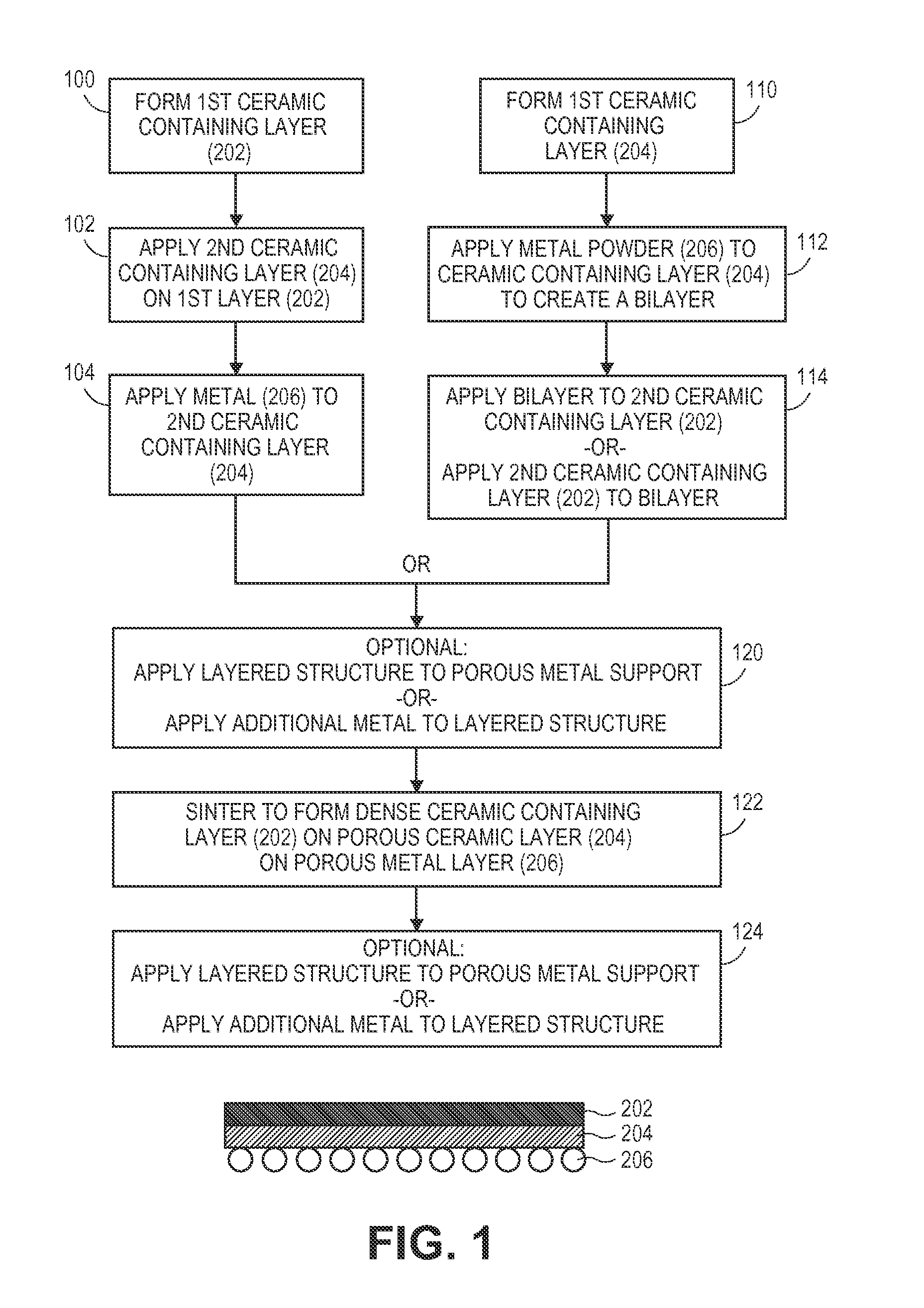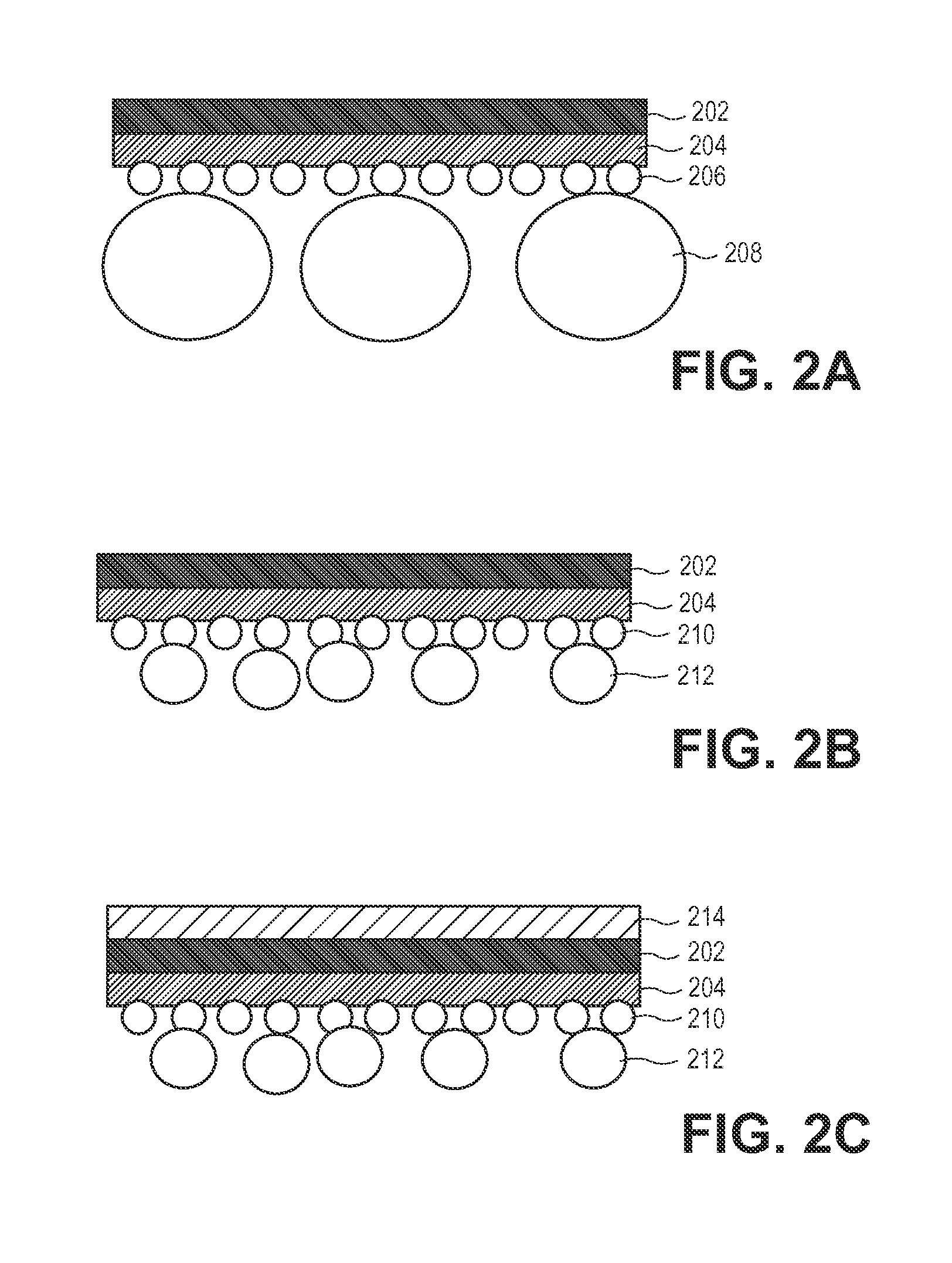Method of making electrochemical device with porous metal layer
a technology of porous metal and electrochemical devices, which is applied in the field of improving the method of producing layered structures, can solve the problems of stress cracks in adjacent layers, achieve the effects of reducing or eliminating the need for binder or pore former in the metal layer, reducing or eliminating the need for pore former materials, and saving the cost of binder/pore former materials
- Summary
- Abstract
- Description
- Claims
- Application Information
AI Technical Summary
Benefits of technology
Problems solved by technology
Method used
Image
Examples
examples
[0046]In the following examples, “YSZ” is Tosoh TZ8Y yttria-stabilized zirconia, “NiO” is green nickel oxide (J.T. Baker), and “metal” is water-atomized 434 stainless steel powder (25-75 μm).
[0047]The examples set forth here are intended to illustrate some of the aspects of this invention and in no way limit the scope or applicability of the invention. In particular, the method of the invention is illustrated below by producing layered structures comprising YSZ and stainless steel. The invention is not limited to these compositions, but rather can be practiced using any ceramic, cermet, or metal compositions.
example a
[0048]Tape-cast sheets of porous YSZ were prepared by casting a viscous slurry of acrylic-YSZ (0.96 g acrylic solution [42 wt % in water], 0.54 g YSZ, 0.08 g Acrylic 0.5-10 μm pore former beads) onto a mylar sheet substrate. The slurry was allowed to air-dry for a set amount of time with no heat applied. After the drying time, metal powder was sprinkled over the tape-cast porous YSZ sheet. A thick layer of metal powder was applied in this way, followed by further drying of the slurry. After drying, excess metal was shaken off, leaving behind a layer of uncompacted metal powder adhering to the porous YSZ sheet. Thus a porous YSZ-metal powder bilayer was formed. FIG. 7 shows the metal and YSZ surfaces of such bilayers, prepared with various drying times between tape-casting and metal sprinkling. The results for various drying times are discussed below.
[0049]1 minute, 2 minutes: The tape-cast YSZ slurry was very wet and capillary forces wicked most of the slurry into the uncompacted me...
example b
[0054]Tape-cast sheets of porous YSZ were prepared by casting a viscous slurry of acrylic-YSZ (0.96 g acrylic solution [42 wt % in water], 0.54 g YSZ, 0.08 g Acrylic 0.5-10 μm pore former beads) onto a mylar sheet substrate, drying, and peeling off the mylar sheet. Two layers of the resulting acrylic-YSZ tape were uniaxially pressed (10 kpsi) on either side of a tape-cast sheet of dense YSZ (Electro-Science Laboratories, Inc.) forming a porous / dense / porous YSZ structure. These YSZ layers were then sandwiched between metal-porous YSZ bilayers prepared according to Example A (with 5 minutes drying time before application of the metal) with the porous YSZ layers of the porous / dense / porous structure and metal-YSZ bilayers adjacent. This sandwich was then uniaxially pressed (1 kpsi) to bond all the acrylic-containing layers together. The structure was then debinded in air at 525° C. to remove the acrylic binder and pore former beads, followed by sintering in reducing atmosphere (4% H2-96...
PUM
| Property | Measurement | Unit |
|---|---|---|
| temperature | aaaaa | aaaaa |
| temperatures | aaaaa | aaaaa |
| thick | aaaaa | aaaaa |
Abstract
Description
Claims
Application Information
 Login to View More
Login to View More - R&D
- Intellectual Property
- Life Sciences
- Materials
- Tech Scout
- Unparalleled Data Quality
- Higher Quality Content
- 60% Fewer Hallucinations
Browse by: Latest US Patents, China's latest patents, Technical Efficacy Thesaurus, Application Domain, Technology Topic, Popular Technical Reports.
© 2025 PatSnap. All rights reserved.Legal|Privacy policy|Modern Slavery Act Transparency Statement|Sitemap|About US| Contact US: help@patsnap.com



